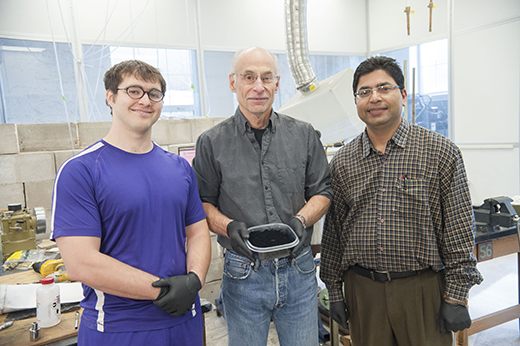Most scientists try to avoid and prevent accidental explosions from occurring in the lab. Unintended explosions can be dangerous and wasteful. Not to mention–they’re rarely productive.
This explosion was an exception.
With a bit of serendipity, physicists at Kansas State University recently discovered a promising new technique to produce graphene on a commercial scale. The KSU team “was working on creating carbon soot aerosol gels with combustion,” Ryan Witwam explains. The researchers’ experiment produced a clumpy black gel, and “upon closer inspection of the material [they produced], they realized it wasn’t just any carbon in the gel.” Without intending to, the team had synthesized graphene.
Cortelyou-Rust University Distinguished Professor of Physics Chris Sorensen is the lead inventor of the recently-issued patent, Process for high-yield production of graphene via detonation of carbon-containing material. Other Kansas State University researchers involved include Arjun Nepal, postdoctoral researcher and instructor of physics, and Gajendra Prasad Singh, KSU visiting scientist. (Photo courtesy of k-state media)
Since its discovery in 2004, graphene has been hailed as the wonder material of the future. At just one carbon atom thick, graphene’s unique physical structure and electrical properties confer the material with a range of valuable applications in tech and medicine.
Until now, the high cost and intensive labor required to produce graphene in large quantities has impeded the material’s commercialization. The material is notoriously difficult and expensive to synthesize. In light of this explosive event, graphene’s potential might be realized just yet.


